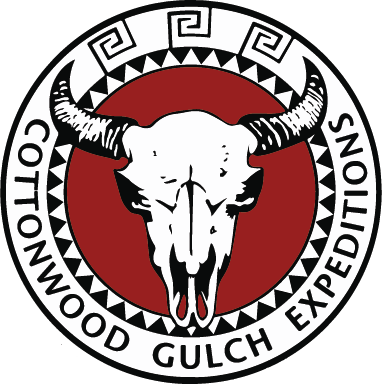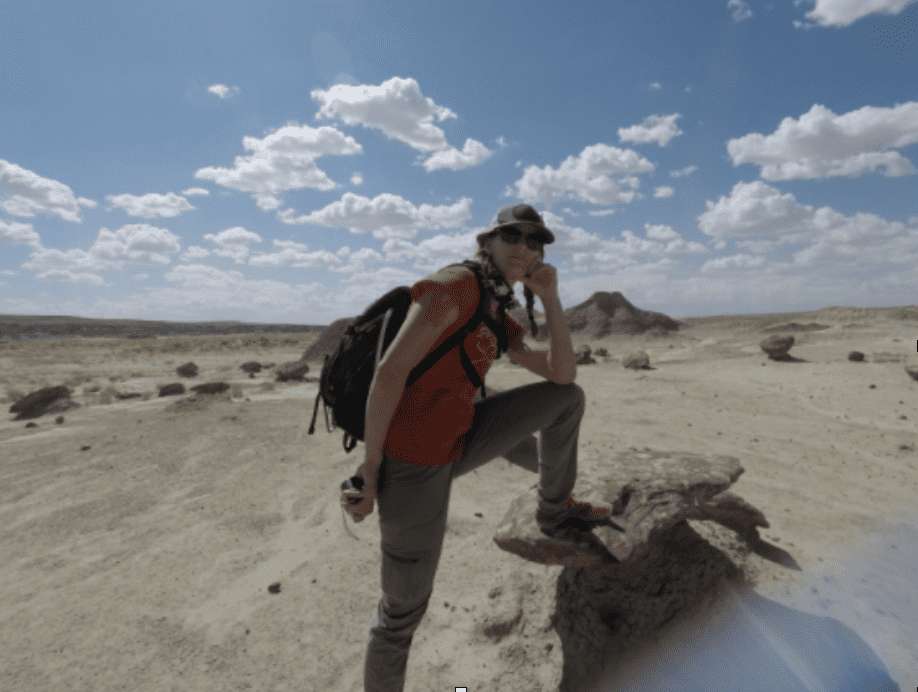Ben: Hi Saba, thanks for taking the time to chat with me today! For starters, can you tell me a little bit about yourself and how you came to work with Cottonwood Gulch and the SIWI program?
Saba: I’m in my fifth year as a teacher at Mount Mahogany. I first met Cottonwood Gulch through an expedition with our school during my third year here. We went with the 8th grade class on a three-day trek. In that time we took the students canyoneering, rock climbing, and caving. From the moment I heard about the SIWI program with the Gulch, I wanted in.
Ben: So what is a typical day teaching like during the pandemic?
Saba: Usually I teach three eighty-minute Zoom sessions in my content area of science. I often find that I am spending a lot of time teaching students how to use and navigate the various virtual systems and it can be challenging to balance this with tangible learning. I’ve also been incorporating stretching so students remember to take care of their bodies. I also make time for students to socialize so they can have connections with one another. After lessons, I answer about eighty emails a day, mostly from students.
Ben: It seems that nationally interest in the outdoors has increased during the pandemic, have you seen that reflected in your students outdoor interest?
Saba: Yes, I’ve actually had several instances where students ask to leave early on friday for camping trips or parents asking to take their child out of class for two or three days for camping. It’s great to see this interest, but it can be hard to make up the lost class time.
Ben: How have you seen the outdoors influence the development of your students on previous SIWI trips?
Saba: Unfortunately, our five-day trip in the spring didn’t happen last year due to covid. However, on the three-day trek, I saw a big shift in individual confidence. Students had to be brave and get through the scary bits of being out in the wilderness without their parents. This was a new experience for many of the students, and they started seeing themselves as capable. In particular, my students who struggle with focus were able to relax and be present because they were physically engaged.
Ben: When you get to camp and it’s time to unwind, are you a Chaco or Croc person?
Saba: I usually go with flip flops actually!
Ben: Now for a really important question…red or green?
Saba: Maybe christmas? I don’t know, it really depends on the dish. I couldn’t live without either one!
Ben: And what’s your Southwestern favorite plant?
Saba: Probably Thimbleberries. It grows up in higher elevations. I’ve seen it on the La Luz trail just outside of Albuquerque. It has fuzzy maple-like leaves and the berry looks like a more orderly raspberry. It’s actually edible!
Ben: That’s really interesting! What does it taste like?
Saba: It tastes like a Thimbleberry! As a rule of thumb, most aggregate berries are edible.
Ben: As you know, in the SIWI curriculum we teach students about public lands, related legislative processes, historical background, natural and applied science, and more. How is this holistic approach to public lands similar or different to what you learned about public lands in school when you were growing up?
Saba: Honestly, I can’t say that I really learned anything about public lands growing up. As a teenager, I learned I could camp anywhere on certain public lands. From there, I just kept learning from my own personal experiences as I pursued outdoor recreation in my life.
Ben: So what is your favorite part of the SIWI experience?
Saba: Nature is really important to me; just being able to outside and have experiences of awe. What makes SIWI so special is being able to share that with students and enabling them to have those experiences of awe for themselves.
Ben: What’s been your most magical experience on a Gulch trek?
Saba: It was probably at the Ah-Shi-Sle-Pah wilderness when a student had a strong anxiety response and we were able to work through it. Eventually, it reached the point where myself and five female students were laying on the dirt road looking up at the milky way talking about being brave and what courage meant. After this, all the students were able to walk away calmer and go to sleep. Also on trek, I’ve experienced the transformation that some students who have physical difficulties undergo. I’ve seen them grow to make the connection that they overcame something difficult through persistence. Students often initially judge themselves based on how easy something may be for other students to accomplish. It’s really powerful on treks to see these same students be able to change their perspective and recognize their accomplishments and take pride in themselves.
Ben: If there was anything you could change about working with Cottonwood Gulch, what would it be?
Saba: Definitely making Covid go away. I wasn’t involved during the first year of the SIWI program, so having more field opportunities this year would be wonderful. I also would consider adding a section to the curriculum about how to make presentations pop. At the end of the first year, I saw the presentations put on by students from different schools. It was clear to see inequity between schools that had resources to make really engaging presentations and those that didn’t. Showing students how to make stronger presentations, would make their experience more accessible to others and enable them to show more of the world the power of the wilderness experience.

